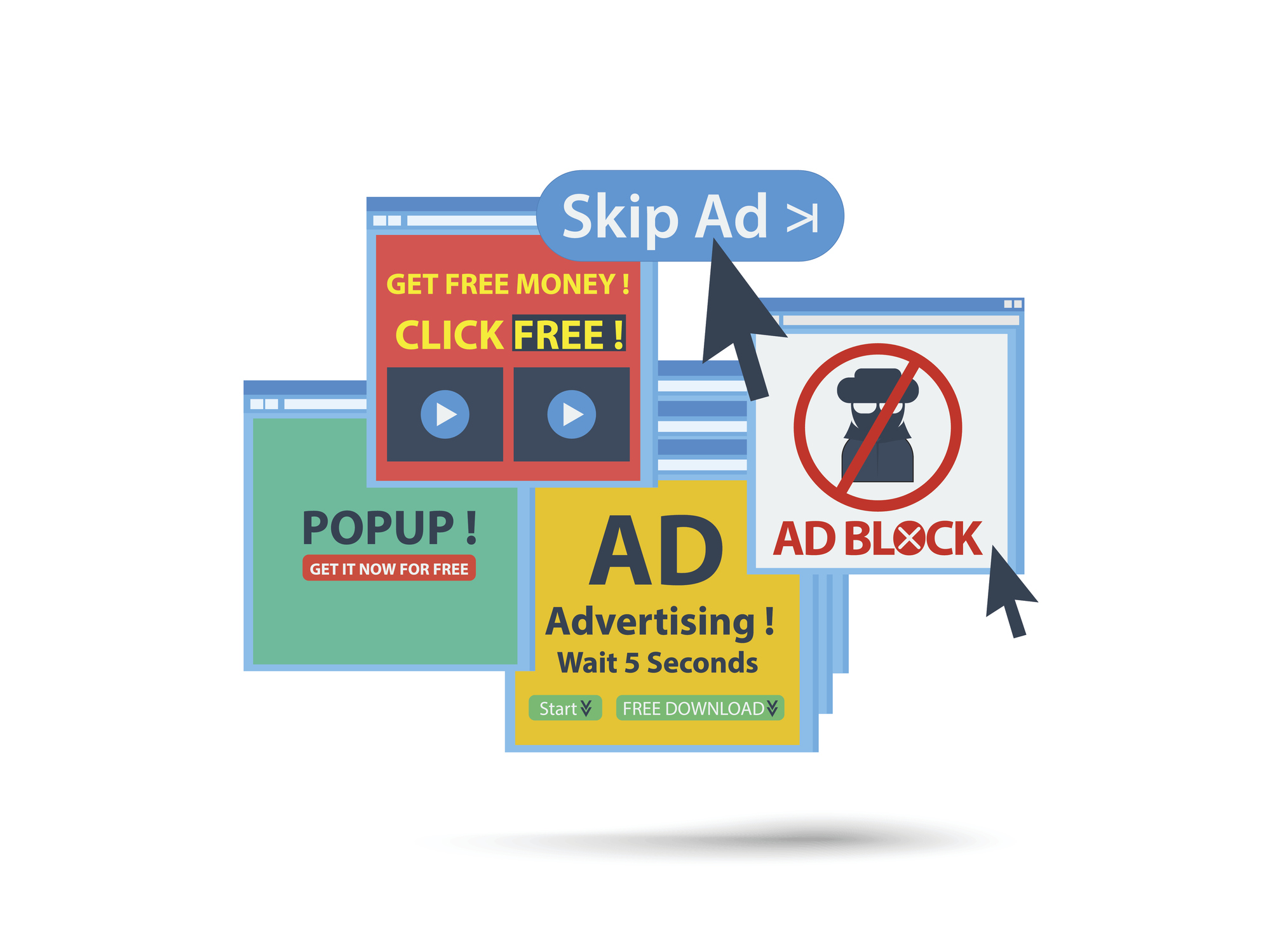August 9, 2019
 by Greg d’Aboville / August 9, 2019
by Greg d’Aboville / August 9, 2019

Pop-ups. Everywhere you go on the web they...well, they pop up.
Pop-ups have always been a controversial form of visitor engagement.
Most people seem to fall into one of two opposite camps: site visitors who argue that they destroy the user experience and marketers who say that they work and are worth the risk.
We chose to approach why so many people hate pop-ups from a different angle using qualitative analysis.
Website pop-ups are small windows that "pop up" over the top of a web page browser used by advertisers to grab a user's attention.
We ran an exclusive survey with three objectives:
And here’s what we found out!
Hmm...
-1.png?width=588&name=G2%20Crowd%20-%20Why%20Your%20Visitors%20Hate%20Your%20Popups%20(and%20What%20You%20Can%20Do%20About%20It)-1.png)
Source: Rand Fishkin
This guy really thinks so.
Well, there’s not much data about pop-ups that are used as a form of engagement.
The most popular study is from the Nielsen Norman Group. It describes pop-ups as the “most hated advertisement technique on desktop.”
The problem? It approaches pop-ups as an advertising form, not an engagement tool. It’s embarrassing because there’s a big difference between models used to display ads and pop-ups used by website owners to engage their visitors.
That’s why we decided to run our own survey (using the Google Survey platform): we wanted to have a clear understanding of web users’ positions towards website pop-ups.
To do so, we targeted a random sample of 400 Americans.
-11.png?width=600&name=G2%20Crowd%20-%20Why%20Your%20Visitors%20Hate%20Your%20Popups%20(and%20What%20You%20Can%20Do%20About%20It)-11.png)
We then asked the following introductory question: “How do you feel about website pop-ups asking for your email address?”
And while we expected some strong reactions, we were surprised by this resounding response: a whopping 82.2% of the sample declared that they hated email pop-ups!
-8.png?width=600&name=G2%20Crowd%20-%20Why%20Your%20Visitors%20Hate%20Your%20Popups%20(and%20What%20You%20Can%20Do%20About%20It)-8.png)
(Note: From a sample of 402 respondents, Google kept only 324 to better meet their idea of “equal representation”; more on the matter here.)
We can conclude from this first question that the vast majority of web users do hate pop-ups.
Now that we know that most people don’t like pop-ups, the next logical question for a marketer is: Why so much hate? What do people have against pop-ups?
To find out, we asked a second (somewhat obvious) question: “What do you dislike most about pop-ups?”
-4.png?width=600&name=G2%20Crowd%20-%20Why%20Your%20Visitors%20Hate%20Your%20Popups%20(and%20What%20You%20Can%20Do%20About%20It)-4.png)
Let’s break down the results together:
To look for a solution, we also asked our survey respondents what might soften their position towards pop-ups:
-2.png?width=600&name=G2%20Crowd%20-%20Why%20Your%20Visitors%20Hate%20Your%20Popups%20(and%20What%20You%20Can%20Do%20About%20It)-2.png)
Again, the results were interesting...
Almost three-quarters of the respondents were inflexible: nothing could convince them to leave their email address in a popup. This is a key to learning: no matter what you do to improve your pop-ups, they may still anger a majority of your visitors.
It’s also in line with the results we’ve obtained with our clients. The conversion rate of our clients’ best performing campaigns seldom exceeds 20%.
You might view these results as a good excuse to stop using pop-ups. But you could also interpret them as an invitation to create better pop-ups.
After all, 27% of the sample indicated that they’re likely to share their email address if at least one of the 5 suggestions that we included are present in the overlay.
Let’s take a closer look at how you can leverage the data from this survey.
Let’s tackle the first takeaway of this study: pop-ups that appear right away are the most frustrating for your visitors.
The worst part about this? Most pop-up tools include an option to delay your pop-up after your visitors have been on your website for more than X seconds.
Options to trigger the pop-up on scroll - or even better, just before they leave your website (it’s called exit-intent) - are also very popular.
-12.png?width=600&name=G2%20Crowd%20-%20Why%20Your%20Visitors%20Hate%20Your%20Popups%20(and%20What%20You%20Can%20Do%20About%20It)-12.png)
Source: Mic.com
Moreover, A/B tests consistently show that delaying a popup always improves its conversion rate. Here’s an example from one of our clients:
-3.png?width=438&name=G2%20Crowd%20-%20Why%20Your%20Visitors%20Hate%20Your%20Popups%20(and%20What%20You%20Can%20Do%20About%20It)-3.png)
The conversion rate is +104% greater for the popup that’s displayed after two pages.
Let me insist on one point here: adding a delay won’t help you collect more emails (usually it’s the opposite), but it will help you increase your conversion rate. In other words, it will increase the willingness of your visitors to give their email address and minimize the proportion of your visitors who are annoyed by your popup.
Is there any point to bugging your visitors with the same pop-up over and over?
No! So before starting a pop-up campaign, make sure to select reasonable frequency and capping settings. As a rule of thumb, we recommend showing the same pop-up no more than three times to a given user and space out displays by at least one week.
.png?width=600&name=G2%20Crowd%20-%20Why%20Your%20Visitors%20Hate%20Your%20Popups%20(and%20What%20You%20Can%20Do%20About%20It).png)
Source: Hubspot
Even basic pop-up builders now include frequency options.
Pop-ups must include something relevant and valuable.
The results of our survey should help you pick an incentive that works. According to our survey, these are the kinds of incentives that appeal most to web users:
Our experience confirms that discounts work great. Sweepstakes are pretty efficient as well. At least, more than these results suggest.
The two examples below show a real-life measure of their impact on an e-commerce website. When the retailer activated the second popup on May 8, the conversion rate immediately increased from 2.5% to 7.4%.
-9.png?width=500&name=G2%20Crowd%20-%20Why%20Your%20Visitors%20Hate%20Your%20Popups%20(and%20What%20You%20Can%20Do%20About%20It)-9.png)
-7.png?width=600&name=G2%20Crowd%20-%20Why%20Your%20Visitors%20Hate%20Your%20Popups%20(and%20What%20You%20Can%20Do%20About%20It)-7.png)
Source: WisePops internal study
Even though only a few respondents selected design as one of the factors that affect their motivation to share their email address, we think it’s still an important element.
Why? If you remember the second question, 45.6% of the respondents replied that they disliked pop-ups because they’re everywhere… Of course, you can’t prevent other websites from using pop-ups.
But you can use a pop-up that doesn’t look like the pop-ups they’ve seen everywhere else. Here are a few options to make your pop-up stand out.
|
Related: Unsure how to make your pop-ups... well... pop? Check out this roundup of the best graphic design software on the market. |
Visuals are one of the easiest ways to make your pop-ups look original. You can use pictures of someone in your team, a visual of your product or even textures to make your pop-ups more catchy and entertaining.
-5.png?width=600&name=G2%20Crowd%20-%20Why%20Your%20Visitors%20Hate%20Your%20Popups%20(and%20What%20You%20Can%20Do%20About%20It)-5.png)
Source: MeetEdgar’s blog
As you may have noticed, most pop-ups have a rectangle shape. Why not be different and try something else?
A rounded pop-up, for example, will have more impact visually than a classic rectangle-shaped popup.
-10.png?width=300&name=G2%20Crowd%20-%20Why%20Your%20Visitors%20Hate%20Your%20Popups%20(and%20What%20You%20Can%20Do%20About%20It)-10.png)
Source: Wisepops’ blog
Email bars are less intrusive than pop-ups, yet are still quite visible. Why not test them on your website?
-6.png?width=600&name=G2%20Crowd%20-%20Why%20Your%20Visitors%20Hate%20Your%20Popups%20(and%20What%20You%20Can%20Do%20About%20It)-6.png)
Source: Chameleoon’s blog
Before we leave the topic of pop-up design, let’s insist that making a good pop-up doesn’t take much longer than creating a bad one. Most of the elements we highlighted can easily be implemented using any popup tool.
73% of our surveys’ respondents said that nothing could convince them to share their email address in a popup. 82% said they hated pop-ups.
These stats prove that using pop-ups can be risky.
They also show that web users are expecting smarter pop-ups. By following the best practices we’ve shared in this article, we’re confident you can convince a good fraction of the 27% who are open to website pop-ups to share their email address. And 27% is quite a significant proportion.
We’re also convinced that better pop-ups can reconcile people with pop-ups: People hate bad pop-ups; smart pop-ups can make a difference.
So if you’re ready to create a “smart” popup, give them a try! You can even start by using a chat template popup. See what a difference they can make in your business - and share with us what you learn and accomplish!.
And if you're still not convinced that pop-ups are the right solution to engage your visitors, why not try alternative options such as live chats, browser notifications ,or surveys.
In order to make sure your pop-ups are cohesive to your website, check out these must-have web design elements for 2019.
Greg d’Aboville has helped dozens of brands with their lead generation strategies at WisePops, a popup app.
Website conversion rate can be a huge pain to a lot of founders and SaaS companies.
 by Ugi Djuric
by Ugi Djuric
Growth begins when you figure out how powerful the tools you’re using are.
 by Ugi Djuric
by Ugi Djuric
The surefire, tried-and-true trick to increasing your pop-up conversions is simpler than you...
 by Greg d’Aboville
by Greg d’Aboville
Website conversion rate can be a huge pain to a lot of founders and SaaS companies.
 by Ugi Djuric
by Ugi Djuric
Growth begins when you figure out how powerful the tools you’re using are.
 by Ugi Djuric
by Ugi Djuric


